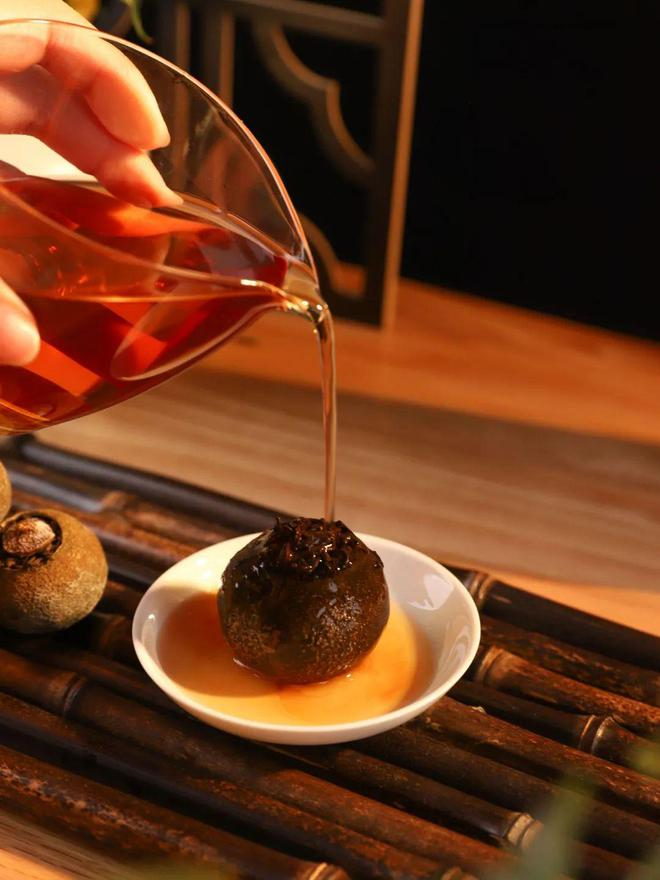☀️ Why Xiao Qing Gan?
Xiao Qing Gan — mini tangerine pu-erh tea — is a unique tea that combines the mellow depth of ripe pu-erh tea with the bright citrus aroma of young green tangerine peel.
Knowing how to brew it properly helps you unlock its best flavor at home, at a tea party, or when sharing with friends.
Here are 3 popular Xiao Qing Gan brewing methods to help you “brew tea by watching the tea” — and enjoy every cup to the fullest!
🍵 1) Whole Fruit Brewing
✔️ Advantages:
- The tea liquor is smooth and balanced.
- The pu-erh tea and citrus notes fully integrate over time.
- The slow extraction makes it very durable — you can steep it many times.
⚠️ Disadvantages:
- Each infusion takes longer to steep, so you’ll need a bit of patience.
👉 Best for:
- Solo tea time, when you want a calm, meditative session.
🌿 2) Pour-Over Brewing (Rinsing Style)
✔️ Advantages:
- Visually pleasing — watching hot water flow over the mini tangerine is a delight!
- Good for tea demonstrations or to impress guests.
⚠️ Disadvantages:
- The citrus peel flavor will be lighter and more subtle.
👉 Best for:
- Tea parties, tastings, or small gatherings where presentation matters.
🍃 3) Break & Brew
✔️ Advantages:
- Strong, rich flavor from the start — more intense taste of both tea and tangerine.
⚠️ Disadvantages:
- Extracts quickly, so it’s not as durable — fewer infusions.
👉 Best for:
- When brewing for a big group or when you want bold flavor fast.
✅ Quick Tips for Brewing Xiao Qing Gan
- Use fresh, good-quality mini tangerine pu-erh for the best result.
- Use water around 95°C (203°F) for rich extraction.
- Adjust steeping time depending on your method and preference.
- Try each method and find what suits your occasion!
🌟 Make the Most of Every Xiao Qing Gan
With these 3 simple brewing methods, you can easily match your tea style to the mood — whether you’re enjoying a quiet solo cup or hosting a tea party.
Ready to experience Xiao Qing Gan?
👉 [Shop Premium Xiao Qing Gan Pu-erh Tea Now] ( link!)
